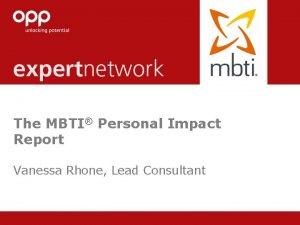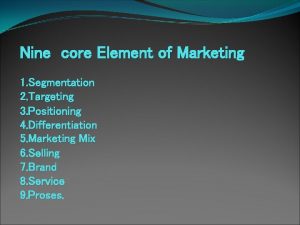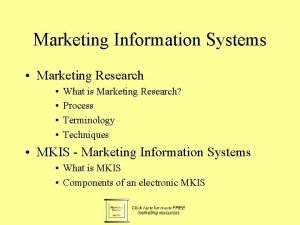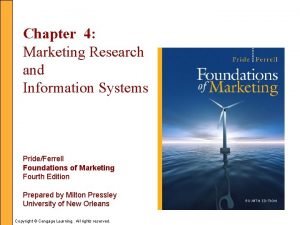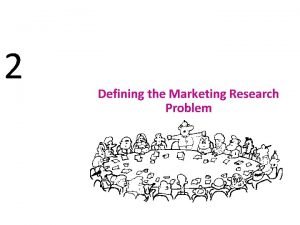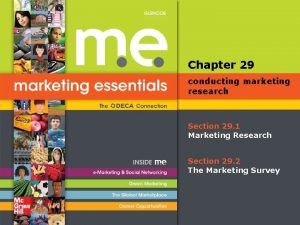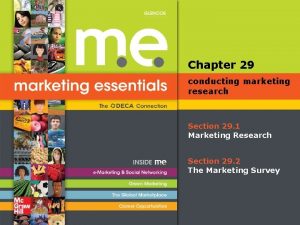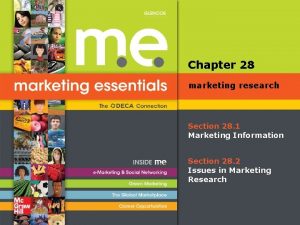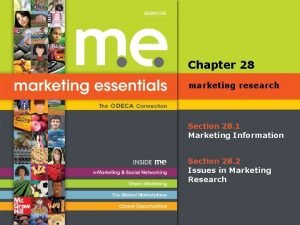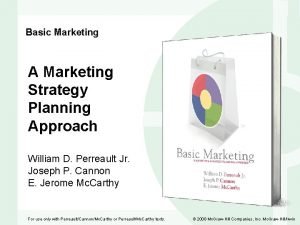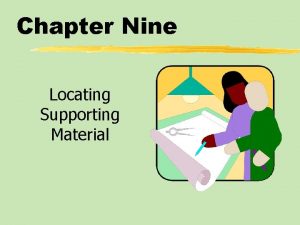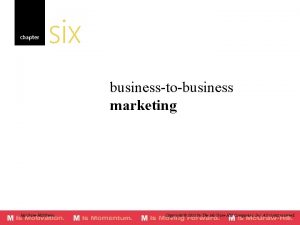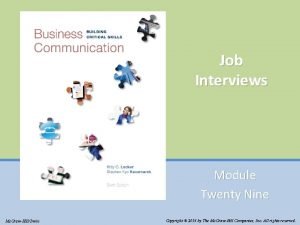chapter nine marketing research Mc GrawHillIrwin Copyright 2013


















- Slides: 18

chapter nine marketing research Mc. Graw-Hill/Irwin Copyright © 2013 by The Mc. Graw-Hill Companies, Inc. All rights reserved.

Marketing Research LEARNING OBJECTIVES LO 1 Identify the five steps in the marketing research process. LO 2 Summarize the differences between secondary data and primary data. LO 3 Describe the various internal and external secondary data sources. LO 4 Describe the various primary data collection techniques. LO 5 Examine the circumstances under which collecting information on consumers is ethical. 9 -2

The Marketing Research Process 9 -3

Step 1: Defining the Objectives and Research Needs What information is needed to answer specific research questions? How should that information be obtained? 9 -4

Step 2: Designing the Research Type of data Type of research 9 -5

Step 3: Data Collection Process Secondary data Primary data 9 -6

External Secondary Data Syndicated Data Scanner Research Panel Research IRI Website 9 -7

Internal Secondary Data Warehouse Data Mining 9 -8

Step 3: Data Collection Techniques 9 -9

Using Exploratory Research Stockbyte/Getty Images How can a firm use exploratory research to uncover consumers’ attitudes toward their product/service? 9 -10

Conclusive Research Methods Can be either: Descriptive Experimental Steve Cole/Getty Images Photodisc Collection/Getty Images 9 -11

Data Collection Techniques Exploratory Methods Observation Social Media In-depth interview Focus group interviews The. Idea. Group Commercial 9 -12

Survey Research 9 -13

• Response rates are relatively high • Respondents may lie less • It is inexpensive • Results are processed and received quickly Simon Fell/Getty Images Web Surveying 9 -14

Experimental Research AP Photo/Mary Altaffer Focus Group by Microsoft for Vista 9 -15

©Getty Images Step 4: Analyzing Data and Developing Insights Converting data into information to explain, predict and/or evaluate a particular situation. 9 -16

Step 5: Action Plan and Implementation Executive Summary Body Conclusions Limitations Digital Vision/Getty Images Supplements including tables, figures, appendices 9 -17

The Ethics of Using Customer Information Strong ethical orientation Adhere to ethical practices 9 -18
 Copyright 2013
Copyright 2013 9 core elements
9 core elements Finer segmentation strategy
Finer segmentation strategy Marketing information systems and marketing research
Marketing information systems and marketing research Define marketing information management
Define marketing information management Marketing information systems and marketing research
Marketing information systems and marketing research Marketing information system kotler
Marketing information system kotler Marketing information systems and marketing research
Marketing information systems and marketing research Analytical model in marketing research
Analytical model in marketing research Chapter 29 conducting marketing research
Chapter 29 conducting marketing research Chapter 29 conducting marketing research answers
Chapter 29 conducting marketing research answers Chapter 28 marketing research
Chapter 28 marketing research Chapter 28 marketing research
Chapter 28 marketing research Introduction to marketing research chapter 1
Introduction to marketing research chapter 1 The marketing research process follows five steps
The marketing research process follows five steps Vddf
Vddf Marketing refers to:
Marketing refers to: Digital marketing marketing refers
Digital marketing marketing refers Universal functions of marketing
Universal functions of marketing
